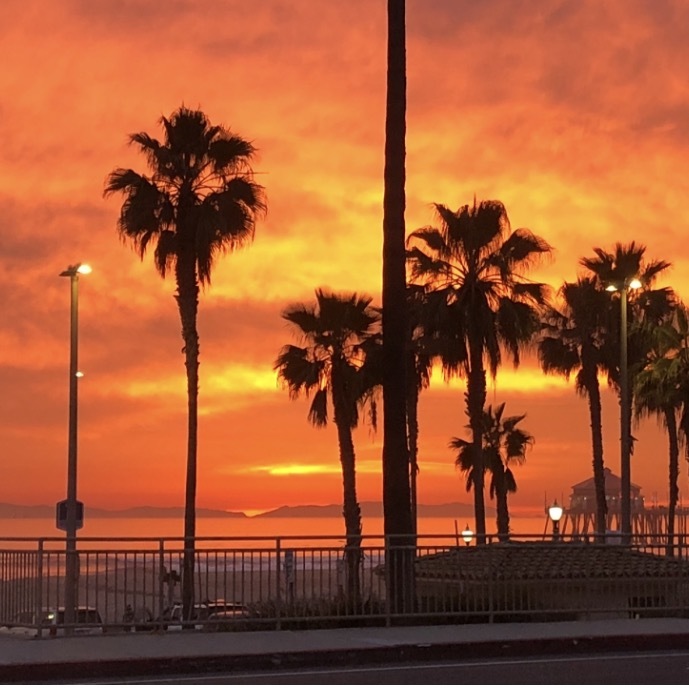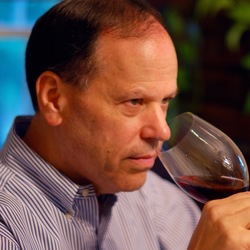Small Acres Cyder
Maurice Vesselle
Brut Millésimé Grand Cru Champagne Blend 2013
Maurice Vesselle is a récoltant whose small estate of maybe 15 acres, is in Bouzy and Tours sur Marnes. Most of their vineyards, all Grand Cru, are dedicated to Pinot Noir with the balance, Chardonnay. They are a strict no-malo, all INOX producer. One other note, the corks on these bottles are so stubborn. I had one hell of a time getting it extracted in an elegant fashion. We had people over and I was multitasking, making the risotto which, of course, needed my undivided attention. Ultimately, I ended up grabbing the Wüsthof and sabering that mf’er.
So, sabered and poured. The wine is a straw color with medium- viscosity and a persistent mousse. On the nose, the wine is developing with notes of strawberry, light brioche, lemons, marzipan and limestone minerals. On the palate, the wine is dry with high acid. Confirming the notes from the nose. The finish is long, mineral driven and zippy! This needs a ton of air at this stage but if you allow it, what a treat! Better after 2025 through 2043. The Millésimé is typically 80/20, Pinot Noir/Chardonnay. Dosage 4g/l (and seems it). Disgorged June 2023. — 2 years ago
Myriad Cellars
100% Whole Cluster Sangiacomo Vineyard Petaluma Gap Syrah 2019
First Mike Smith Syrah I’ve had, great cold climate style
Jeb 96 is spot on this time
Certified organic with 60 planted acres and 11 clone and rootstock combinations, the Fedrick Vineyard is deeply woven throughout Sonoma & Petaluma history. Originally part of the Rancho Petaluma Land Grant issued to Mariano Guadalupe Vallejo in 1834, the land passed thru several owners from dairy farms to cattle ranches before being leased by the Sangiacomo family in 2000 to become a vineyard. Located in the southern end of the Petaluma Gap appellation, it is set on rolling hills and is known for its high-end Syrah and Pinot Noir grapes that are sought after for their depth and balance. Myriad selected a small rise on the southern edge where growing and drainage conditions harmonize, to make one of our more crowd pleasing bolder Syrahs. — 4 years ago
Clos Pegase
Mitsuko's Vineyard Pinot Noir 2022
Clos Pegase – Pinot Noir, Mitsuko’s Vineyard 2022
Carneros AVA, Napa Valley, California – USA 🇺🇸
Overview
Clos Pegase has been a benchmark in Carneros since the 1980s, and Mitsuko’s Vineyard is its crown jewel—365 acres of diverse microclimates that consistently produce Pinot Noir of elegance and depth. The 2022 bottling is 100% Pinot Noir, capturing the cool, fog-influenced Carneros terroir that gives the wine freshness and nuance.
Aromas & Flavors
The nose is immediately expressive with ripe cherry, cranberry, and pomegranate, supported by subtle violet and rose petal notes. Hints of baking spices—clove, cinnamon, and nutmeg—interlace with earthy undertones and a touch of vanilla. On the palate, red raspberry, cherry cola, and wild strawberry emerge, accented by a light smokiness and faint forest floor.
Mouthfeel
Silky and medium-bodied, with soft, polished tannins and a bright streak of acidity that keeps the wine vibrant. The finish lingers with red fruits and spice, offering balance and finesse.
Winemaking Notes
Hand-harvested fruit from Mitsuko’s Vineyard is fermented in small lots and aged in French oak (≈30% new) for 9–10 months. This approach preserves the vineyard’s freshness while layering in subtle oak complexity.
Food Pairing
Excellent with roasted duck breast, grilled salmon, or mushroom risotto. It also pairs beautifully with Mediterranean dishes like lamb kebabs or simple tomato-basil pasta.
Verdict
A polished, terroir-driven Carneros Pinot Noir that balances fruit, earth, and spice with seamless elegance. The 2022 vintage shows both immediate charm and the structure to evolve gracefully over the next 5–7 years. Cheers! — 3 months ago
Virginie de Valandraud
St. Émilion Red Bordeaux Blend 2000
A steal on auction
I wouldn’t consider it a 🥩 wine but great with charcuterie
Web info
Chateau Valandraud is represented by the passion of a couple: Jean-Luc Thunevin and Murielle Andraud. Following the great success with the wine merchant business in Saint Emilion, they opened their own vineyard to produce their own wine.
In 1989, they bought a small parcel of 0.6 hectare (1.48 acres) located in a small valley near Saint Emilion between Pavie-Macquin and La Clotte. The origin of the wine name is as much geographic (Val: Vallon de Fongaban), as sentimental (Andraud: Murielle’s maiden name). Thus Chateau Valandraud was born.
Little by little, Jean-Luc and his wife purchased several other parcels of vines, and now, the domain represents a total surface of 10 hectares (24.71 acres), located in various areas of Saint Emilion. The diversity of soils and varietals permit the production of 6 different wines: Chateau Valandraud, Chateau Valandraud Casher, Virginie de Valandraud and the 3 de Valandraud (the second wine of Chateau Valandraud and Virginie de Valandraud), Blanc de Valandraud N° 1 and N° 2.
The final blending of the various parcels occurs in the month of March, following a blind tasting with the help of the world famous oenologist, Michel Rolland. — 3 years ago
Sinegal Estate
Reserve Cabernet Sauvignon Blend 2016
Of the Napa wines I tasted over 4 days on this trip, the 16 Sinegal Reserve & the 13 Seavey Cabernet were my favorites. Both great wines but, stylistically very different. The Seavy big and bold and the Sinegal pure beauty & elegance.
The nose reveals very dark currants. Dark & milk chocolate. Blackberries, creamy black raspberries, black plum & plum, mocha powder, core of anise, beautiful dark spice, soft volcanic soils, some dry brush and lavender, violets and fresh dark red florals.
The body is full. The tannins are really meaty but, exceptionally soft, fine and meaty. Lots of dark spice with plenty of heat. The mouthfeel is gorgeously sexy with feminine elegance. Dark & milk chocolate. Blackberries, creamy black raspberries, black plum & plum, mocha powder, core of anise, beautiful dark spice, big sweet tarry notes, soft volcanic soils, some dry brush, lavender, violets and fresh dark red florals. The acidity is perfect. The finish is well balanced sexy and gorgeous. The structure, tension say this needs to cellar eight to ten years.
Photos of; tasting cellar area, modern stainless tanks, outside terrace tasting and or dining area and their grounds and lake.
Producer history and notes...Sinegal Estate was founded in 2013 with wines made from their 30 acre Inglewood estate in St Helena (not to be confused with the Inglenook Estate in Rutherford). This is not a new property, it was part of an original land grant and its more modern day history dates back to 1879 when owner Alton Williams purchased the property and planted the first vines in 1881.
The property has changed owners a number of times over the decades. At one point the Jaegers’ owned the estate, Bill Jaeger and his wife Lila lived here. These Napa Valley pioneers were in part responsible for helping establish Freemark Abbey and Rutherford Hill. Lila was also a gardener and established beautiful gardens on the property.
Owners, David (father)and James (son) Sinegal purchased the property in 2013. James was the co-founder of Costco and once CEO. David worked at Costco for 21 years.
After the purchase, David divided each of their vineyards into smaller blocks, picking selectively (30 times in 2013) rather than all at once, and adding technology to the vineyards so they have up to the date reports on a number of data points including temperatures, soil moisture and various barometric pressures. If they want to selectively water, say vine #67 in row number three, they can do so with their irrigation system. Extremely efficient!
Nine acres of vines are planted to various red varietals including; Cabernet Sauvignon, Cabernet Franc, Malbec and Petit Verdot. They have some of the older Cabernet Franc vines in the valley that are 30+ years old.
The soils here are diverse and can vary even within small geographic ranges on the property. Some of their vineyards are planted on the valley floor – while their upper vineyards are hillside, on the edges of the Mayacamas Mountains.
Their landscape above the property is interesting and part of the Mayacamas Mountains. Visually, it appears drier than other parts of this mountain range and the vegetation reflects that with grey pine and more open natural vegetation rather than the thicker wooded vegetation more commonly associated with parts of Spring and Diamond Mountains to the north.
After purchasing the property, David created planned and laid out his vision to create a world-class boutique wine making operation. Many wineries in the Napa Valley can take years before they come to fruition, not so here. After only about 10 months, the existing winery was remodeled. 6,500 feet of caves were expanded and drilled into the hillside behind the winery and a new hospitality center was built. The hospitality center ties in very well with the winery. From the small tasting room, large doors open revealing the tanks.
A vegetable garden slightly under an acre grows just south of the winery building. Vegetables from this garden are sold to nearby restaurants.
A skeleton key appears on the labels of their wine and is prominently displayed on the outside of their winery building. This has historical significance. The original key opens the front door to the historic home on site and is displayed in the tasting room. With respect to the history of this property, this one key has already become iconic to the brand.
You only need to look inside of the winery to see that their wine making team is focused on quality. Each of the small lot tanks have built in pumps which can be controlled and programmed to do pump-overs anytime of the day or night. In addition, these tanks have multiple points at which the temperature can be controlled. These tanks do not necessarily handle all their fermentation’s. They also ferment small lots in puncheons and barrels as needed. Control across the board is the key here and it is the control of the details in wine making that is is so integral from when the fruit first arrives through to when it is bottled.
2013 was their inaugural release. The focus is currently on two primary varietals, Sauvignon Blanc and Cabernet Sauvignon. The 2013 Sauvignon Blanc were sourced from the estate but, then it was determined it was growing in an area better suited for red varietals so it was torn up and new plantings were made in the back of the property. While not far from these original plantings, their new home for their Sauvignon Blanc features different soils and is growing in a cooler part of the property.
The wine making team has been experimenting with the style of this varietal since 2013 with subsequent vintages seeing more oak. Especially, using the slightly longer cigar shaped barrels , which have extra surface area for maximizing complexities including textural feel imparted from aging the wine on the lees in these particular barrels. Maceration on the red wines is often 8-10 days and sometimes up to 20 days.
Most of their sales are direct to visitors or through their mailing list. However, they do have some distribution outside California in Florida, New York and Washington. Primarily to restaurants. — 7 years ago


Robert Sinskey Vineyards
Los Carneros - Napa Valley Pinot Noir 2018
Small production. RSV has under 200 acres of vineyards in 5 Carneros locations & a winery in the Stags Leap District. The wines are 100% organic. Ruby with berry, cherry & spice aromas. On the palate flavors of wild strawberry & cherry with complex spice, citrus, oak and balanced acidity. Fine soft tannins, good balance, long finish with an earthy characteristic ending with notes of vanilla spice. Nice! — 8 months ago
Robert Sinskey Vineyards
Los Carneros Pinot Noir 2017
Small production. RSV has under 200 acres of vineyards in 5 Carneros locations & a winery in the Stags Leap District. The wines are 100% organic. Ruby with berry, cherry & spice aromas. On the palate flavors of wild strawberry & cherry with complex spice, citrus, oak and balanced acidity. Fine soft tannins, good balance, long finish with an earthy characteristic ending with notes of vanilla spice. Nice! — 8 months ago
Monthélie-Douhairet Porcheret
Cuvée Miss Armande Monthelie Pinot Noir 2018
Popped and poured; consumed over 3+ hours. The 2018 Monthelie, “Cuvée Miss Armande” by Domaine Douhairet-Porcheret comes from small parcels throughout Monthelie totaling a little over 2 acres. The wine pours a bright ruby color with a transparent core. No signs of sediment. The wine is medium viscosity, with no staining of the tears. On the nose, the wine is redolent of red fruit: lightly macerated strawberries and cherries, horse blanket, red flowers with some forest floor. On the palate, the wine is dry with medium tannin and medium acid. The notes on the nose are confirmed. This is a somewhat rustic Burgundy but hugely charming right from the go. Drinking well now and should continue to do so through 2030. — 3 years ago
Jones Family Vineyard
Napa Valley Cabernet Sauvignon 2001
Our first bottling from this small production family winery in Calistoga.
My first impressions of this wine, it’s a classic older Calistoga Cabernet. It’s nicely resolved but, not at the end of its life as some have predicted. It is a shade past its prime but, drinking nicely with the exception it’s a touch hot, even after all this time in bottle and when temp’s were not pushing alcohol levels like they can now. However, heat aside, I enjoy wines just the other side of their prime and beyond. Brings out additional complexity-characteristics and are infinitely more interesting.
The nose reveals, stewed & baked fruits of; blackberries, black plum, black cherry extract, black raspberries with some deep blue fruits. Loads of baking spices; clove, nutmeg, cinnamon and vanilla. Dark spice, dark chocolate, sweet tarriness, mocha, caramel, walnut shells, anise to black licorice, steeped, dark fruit teas, mint/eucalyptus, dry crushed rocks, leather, tobacco, graphite, used charcoal, dark liqueur and cola, dry herbs with dark, red, blue, purple, fresh & withering flowers accented with lavender.
The body is rich, lush, ruby, statin, velvety and thick. The tannins are rounded & softened but, still speaking loudly. The structure, tension, length and balance are in a very good place. This wine has legs to stand for another 5-10 years depending on how you enjoy them. Stewed, candied & baked fruits of; blackberries, black plum, black cherry extract, black raspberries deep blue fruits, purple fruit blend, haunting raspberries with poached strawberries as it sets. Loads of baking spices; clove, nutmeg, cinnamon and vanilla. Dark spice with good palate heat, dark chocolate, sweet tarriness, mocha, caramel, walnut shells, anise to black licorice, steeped, dark fruit teas, mint/eucalyptus, dry crushed rocks, dry top soil, slightly, moist clay, pronounced, fine volcanic minerals, leather, tobacco, graphite, used charcoal, dark liqueur and cola, dry herbs with dark, red, blue, purple, fresh & withering flowers accented with lavender. The acidity is round & exquisite. The long finish is; well balanced fruit & earth, very complexity, rich, delicious and persists endlessly.
Photos of; Stephanie Jones Bailey, Rick and Elaine Jones, Estate view, their Cabernet fruit close to harvest and vineyard staff managing fruit clusters & leafing.
Producer notes...they were founded in 1996. Jones Family Vineyards specializes in estate grown Cabernet Sauvignon and Sauvignon Blanc. Thomas Rivers Brown makes their wines, two Cabernet wines...Jones Family Vineyards Estate Cabernet Sauvignon and The Sisters. TRB also makes an extremely limited production of aged Sauvignon Blanc that is cellared for over 3 years in barrel and bottle.
Jones Family has ten acres of south facing vineyards that lie 600 to 800 feet off the valley floor, resting above the fog line, an ideal altitude for growing Cabernet in the Napa Valley area.
@Paul T- Huntington Beach FYI. — 6 years ago










Ericsson
Harlan Estate is secluded high up in the hills of Oakville. Protected by the tall pine forest to west and overlooking the valley to the east. Really seems to tower above all: To Kalon, Beckstoffer, Opus, Martha’s Vineyard, they are all visible from the grounds at the estate. The air is cooler up here, the soil has great drainage, the vines are old and are dry farmed (truly dry farmed). They are probably one of a handful of vineyards in Napa that can get away with doing it effectively due the natural factors surrounding the vineyad: higher altitude means cooler temperatures in summer, the mountains to the west provide early shade during rippening season (higher diurnal range), yet Napa has a warm continental climate and the berries still get plenty of sunshine. About 30 acres of planted vines with annual production of 2,500 cases, give or take (that is a very small production). Harlan crafts one thing: a Bordeaux style red blend. Aged in mostly French oak for two years and another 18 months in bottle before release. The wine displays true vintage variation from a place that’s never had a “bad vintage.” Tasted 2014, 2015, 2019, and 2023 (from barrel). The wine is opulent yet elegant, refined, it has levels of complexity and layer over layer of flavor. It has balance, intensity, length and a long finish. It’s a special occasion wine or the wine you open to make an occasion special. It’s the kind of wine you’ll remember for it captures a sense of time and place in liquid memory. — 2 months ago